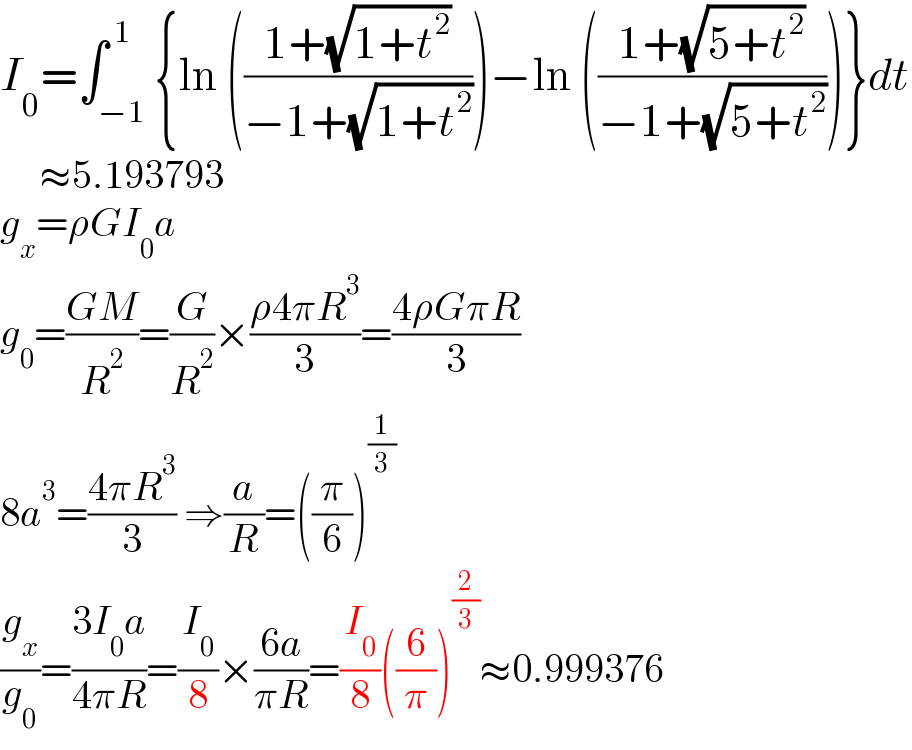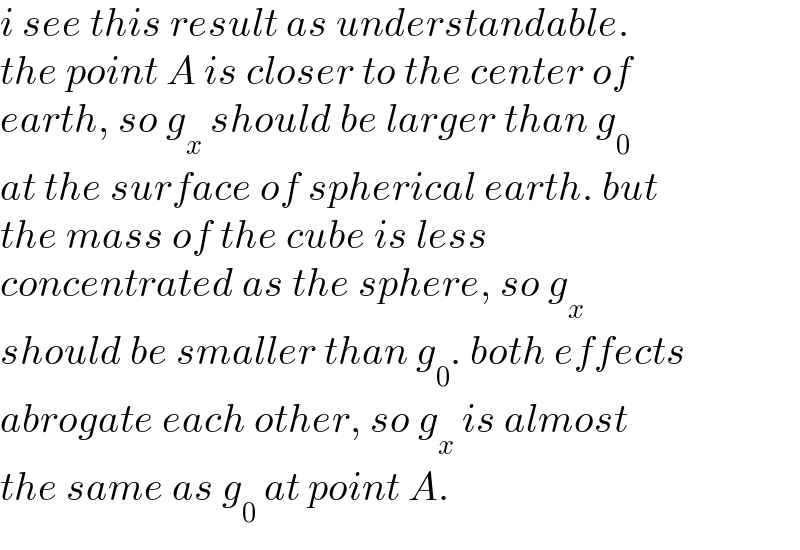
Question and Answers Forum
Question Number 138896 by ajfour last updated on 19/Apr/21

Answered by ajfour last updated on 20/Apr/21
![Let A be origin and x axis vertically down towards center of cube. −dg_x =(((Gdm)x)/((x^2 +y^2 +z^2 )^(3/2) )) −dg_x =(((ρG)xdxdydz)/((x^2 +y^2 +z^2 )^(3/2) )) x∈[0,2a] ; y∈[−a,a] ; z∈[−a,a] −(g_x /(ρG))=∫dz∫dy{(1/( (√(y^2 +z^2 ))))−(1/( (√(4a^2 +y^2 +z^2 ))))} =∫_(−a) ^( a) {ln (((a+(√(a^2 +z^2 )))/(−a+(√(a^2 +z^2 )))))−ln( ((a+(√(5a^2 +z^2 )))/(−a+(√(5a^2 +z^2 )))))}dz ρ=(M/(8a^3 )) & g_0 =−((GM)/R^2 )=−((ρG(8a^3 ))/((((6a^3 )/π))^(2/3) )) as (4/3)πR^3 =8a^3 ⇒ g_0 =−((ρG(8a))/(((6/π))^(2/3) )) ⇒ −ρG=(g_0 /(8a))((6/π))^(2/3) −ρG=((3g_0 )/(4πR)) as a=R((π/6))^(1/3) ⇒ ((g_x (4πR))/(3g_0 ))=∫_(−a) ^( a) {ln (((a+(√(a^2 +z^2 )))/(−a+(√(a^2 +z^2 )))))−ln( ((a+(√(5a^2 +z^2 )))/(−a+(√(5a^2 +z^2 )))))}dz let (z/a)=t ⇒ dz=adt for z=a, t=1 & z=−a, t=−1 so (g_x /g_0 )=((3a)/(4πR))∫_(−1) ^( 1) {ln (((1+(√(1+t^2 )))/(−1+(√(1+t^2 )))))−ln (((1+(√(5+t^2 )))/(−1+(√(5+t^2 )))))}dt (g_x /g_0 )=(1/8)((6/π))^(2/3) ( I_0 )](Q138903.png)
Commented by mr W last updated on 20/Apr/21

Commented by ajfour last updated on 20/Apr/21

Commented by mr W last updated on 20/Apr/21

Commented by mr W last updated on 20/Apr/21

Commented by mr W last updated on 20/Apr/21

Commented by mr W last updated on 20/Apr/21
https://possiblywrong.wordpress.com/2011/09/09/if-the-earth-were-a-cube/
